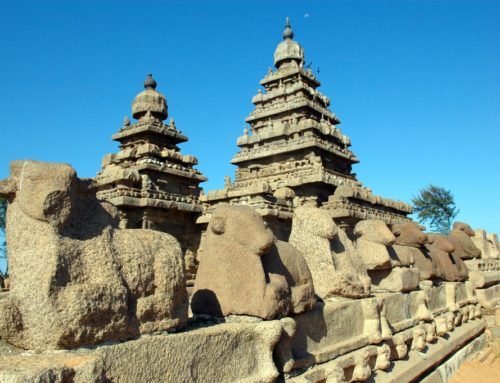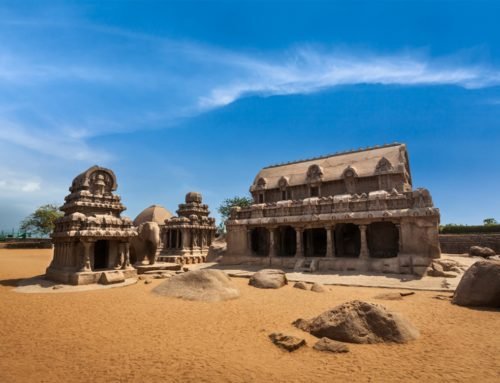Overview
- Features: Bas-relief with scenes of Hindu mythology
- Opening Times: Dawn to dusk, daily
- Best Time to Visit: Monsoons (Jul-Sep)
- Duration: 20 to 30 mins
- Travelled By: Foot
- Cost: Free
- Address: West Raja Street, Mahabalipuram, Tamil Nadu, India
- Type: Historic site
Author Reviews[display_rating_item_results rating_form_id=”2″ rating_entry_ids=”1″ show_category_filter=”false” show_options=”true” result_type=”star_rating” preserve_max_rating=”true” show_title=”false” show_count=”false” ]
Total Rating: [display_rating_result rating_form_id=”2″ show_count=”false” show_rich_snippets=true] [accordions load=”1″] [accordion title=”User Reviews” last] [display_rating_item_results rating_form_id=”5″ show_options=”true” result_type=”star_rating” preserve_max_rating=”true” show_title=”false” show_count=”true” show_rich_snippets=true] [/accordion] [accordion title=”Add Review”][display_rating_form show_email_input=”true” show_comment_textarea=”true” show_name_input=”true” rating_form_id=”5″] [/accordion] [/accordions]
Summary
Inland from the Shore Temple, in the village centre, is the celebrated bas-relief Bhagiratha’s Penance, also known as Arjuna’s Penance or the Descent of the Ganges. Sculpted on the face of two enormous adjacent rocks, the bas-relief is one of the greatest of its age and certainly one of the most convincing and unpretentious works of ancient art in India.
Arjuna’s Penance Mahabalipuram
Inland from the Shore Temple, in the village centre, is the celebrated bas-relief Bhagiratha’s Penance, also known as Arjuna’s Penance or the Descent of the Ganges. Sculpted on the face of two enormous adjacent rocks, 29 m long and 7 m high, the bas-relief is one of the greatest of its age and certainly one of the most convincing and unpretentious works of ancient art in India.
Carved on an immense rock with a natural vertical cleft, symbolising the Ganges, the panel depicts in great detail the story of the sacred river’s descent from the sky. The penance bursts with scenes of Hindu myth (notice the nagas, or snake-beings, that descend the cleft once filled with water) and everyday vignettes of South Indian life. A herd of elephants marches under armies of celestial beings, while standing on one leg, the meditative Arjuna performs self-mortification so he can be granted Shiva’s most powerful weapon, the god-slaying Pasupata (at the top left-hand side of the rock, near the cleft). In Hinduism, ‘penance’ does not mean suffering that erases sins, but distress undertaken for the sake of boons from the gods.
There is some controversy however as to whether the story portrayed is actually the story of Arjuna or if it is the story of Bhagiratha who is an ancestor to Lord Rama.
Another interpretation: the carving depicts the penance of the sage Bhagaritha who asked the Ganges to fall to the earth and cleanse the ashes (and ergo, sins) of his dead relatives. This penance is witnessed on the panel by celestial and semi-celestial beings, ascetics, and animals.
There’s humour amid the holy: notice the cat performing his own penance to a crowd of appreciative mice (at the bottom right panel in front of the giant elephant).
The symbolism is best understood during the monsoon when a man-made waterfall, fed from a collecting chamber above, issues from the natural crack between the two rocks and flows down the cleft and collects in the tank below.
Getting to & from Arjuna’s Penance
Arjuna’s Penance is situated on West Raja Street in the village centre. The best way to get here is on foot or bicycle. A self-guided walking tour of the ruins in Mahabalipuram is an excellent way to see the sites including Arjuna’s Penance. Alternatively, you can speed up your tour on a bicycle which can be hired for the day in town.







